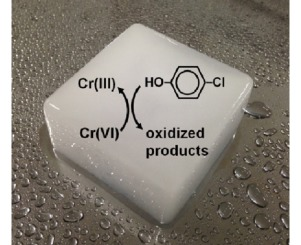Publication
Advanced Redox Technology Lab
Publication
Advanced Redox Technology Lab
Journal papers
The redox reaction between 4-chlorophenol (4-CP) and chromate (Cr(VI)) (i.e., the simultaneous oxidation of 4-CP by Cr(VI) and reduction of Cr(VI) by 4-CP) in ice (i.e., at −20 °C) was compared with the corresponding reaction in water (i.e., at 25 °C). The redox conversion of 4-CP/Cr(VI), which was negligible in water, was significantly accelerated in ice. This accelerated redox conversion of 4-CP/Cr(VI) in ice is ascribed to the freeze concentration effect occurring during freezing, which excludes solutes (i.e., 4-CP and Cr(VI)) and protons from the ice crystals and subsequently concentrates them in the liquid brine. The concentrations of Cr(VI) and protons in the liquid brine were confirmed by measuring the optical image and the UV–vis absorption spectra of cresol red (CR) as a pH indicator of frozen solution. The redox conversion of 4-CP/Cr(VI) was observed in water when the concentrations of 4-CP/protons or Cr(VI)/protons increased by 100/1000-fold. These results corroborate the freeze concentration effect as the reason for the accelerated redox conversion of 4-CP/Cr(VI) in ice. The redox conversion of various phenolic pollutants/Cr(VI) and 4-CP/Cr(VI) in real wastewater was successfully achieved in ice, which verifies the environmental relevance and importance of freezing-accelerated redox conversion of phenolic pollutants/Cr(VI) in cold regions.
